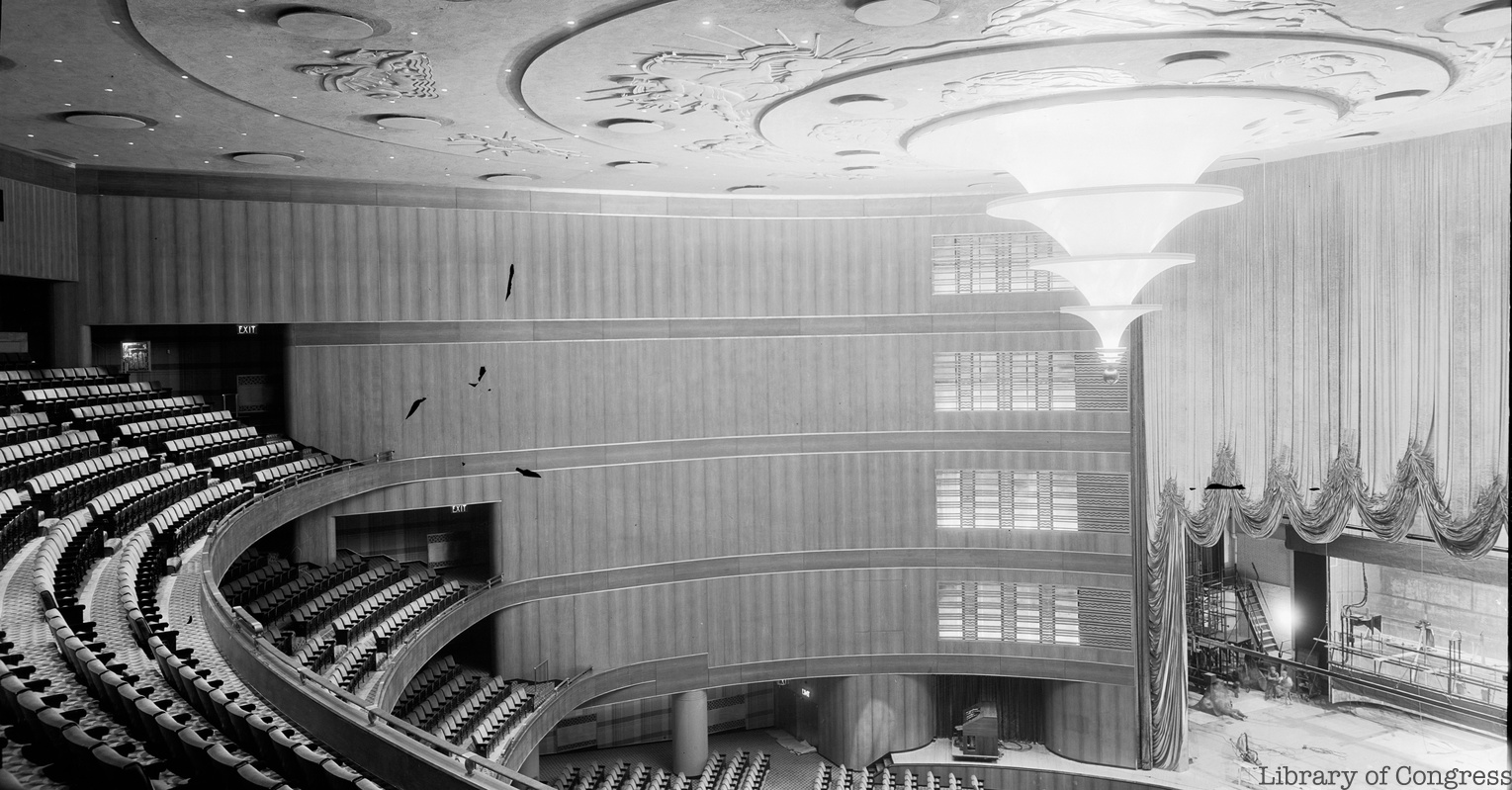The only building to ever be demolished from the original Rockefeller Center complex was the RKO Roxy Theater, also known as the Centre Theater, at 1230 Sixth Avenue. The theater was named after Samuel “Roxy” Rothafel, a theater impresario whose name was synonymous with opulence and glamour. The theater, just a block away from the iconic Radio City Music Hall, hosted everything from motion picture screenings to ice skating shows throughout its short existence.
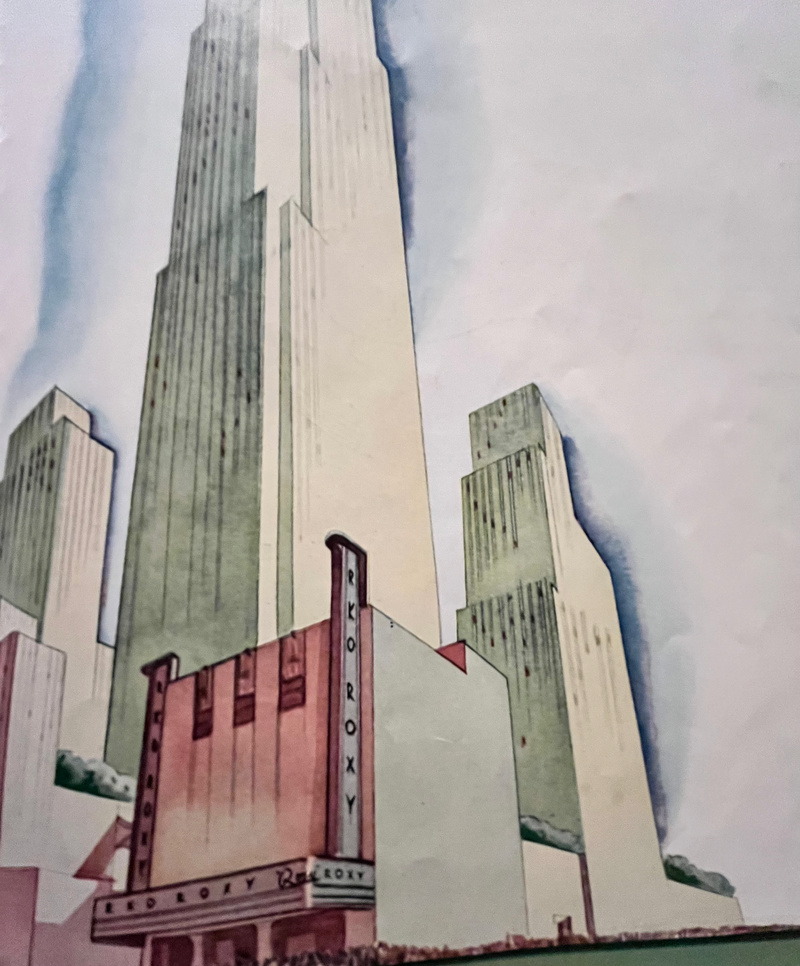
Construction on the Roxy began in 1930 after the land was cleared of existing brownstones. The theater was meant to be a companion to the nearby Radio City Music Hall. While Radio City hosted live performances, the Roxy was intended to show films. Both theaters were designed by noted architect Edward Durell Stone.
Stone’s designs for the two different theaters were very similar. Both fit the overall modernist, Art Deco style of the complex, were constructed out of limestone, and featured tall vertical marquees that ran perpendicular to a thin horizontal marquee. The two theaters did differ in size. While Radio City could accommodate over 6,000 seats, the Roxy was almost half the size, accommodating just over 3,000.
Uncover more tales from the forgotten history of Rockefeller Center on Untapped New York’s Secrets of Rockefeller Center walking tour!
Above the large windows on the 49th Street facade of the Roxy, there was a large metal and enamel sculpture titled “Radio and Television Encompassing the Earth.” The sculpture was designed by American Art Deco muralist Hildreth Meière, who also designed bas-reliefs that appear on the 50th Street facade of Radio City. A recreation of “Radio and Television Encompassing the Earth” was installed in the Rockefeller Center underground concourse in 1988. Untapped New York consulted multiple Rockefeller Center employees on a quest to locate the sculpture today, but it appears to have been removed or hiding behind construction walls.
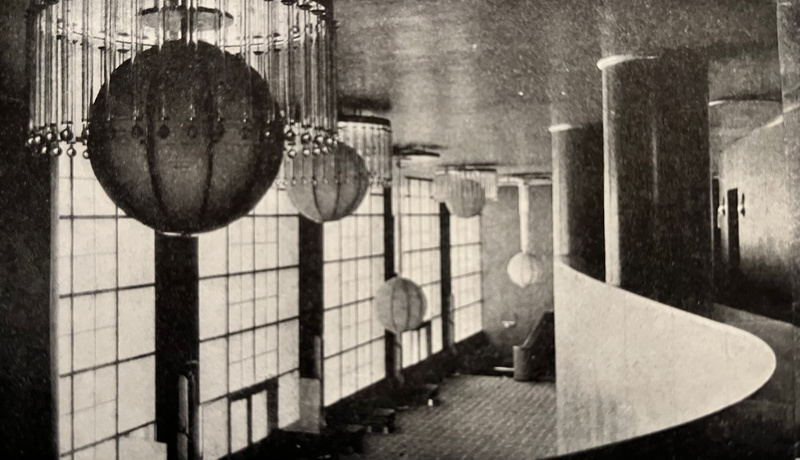
The interiors of the Roxy were designed by Eugene Schoen. Guests purchased their tickets at one of three ticket booths in a low-ceiling lobby. Next, they passed under a two-tiered fountain and into the grand two-story foyer. Light streamed in through 24-foot floor-to-ceiling Corning Glass windows dressed in red and gold velvet curtains. Hanging from the blue ceiling was a series of spherical chandeliers by Steuben Glass. Opposite the windows, an undulating wall covered in mahogany followed the curve of the theater’s mezzanine. It was an impressive, modern space that oozed glamour.
More works by Hildreth Meière were scattered throughout the interior, including above the auditorium doors. There, guests would pass under painted silhouettes of mythological Greek figures as they went through the leather-covered doors. The auditorium was covered in wood and plaid-patterned linen. The main feature of the space was a giant chandelier, said to be the largest light fixture in the world.
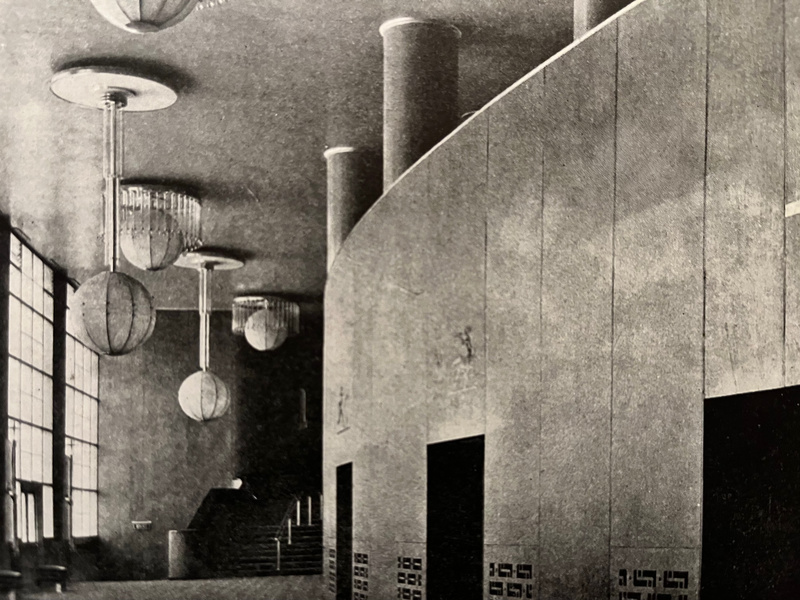
The chandelier weighed six and a half tons and measured 30 feet in diameter. It had four different color settings, amber, red, green, and blue. Inside the three-tiered fixture were over a hundred floodlamps and dozens of spotlights. Swirling around the light were relief sculptures of gods and goddesses designed by Rene P. Chambellan with the Italian sculptor Cronozio Meldarelli. According to the New York Times, the artist said the figures represented the forces of love, enjoyment, sport, play, and freedom. Chambellan also created the iconic Atlas statue at Rockefeller Center and others around the complex.
The RKO Roxy Theater had a Gala Opening on December 29, 1932, just two days after the grand opening of Radio City. Entertainment for that evening was described by the New York Times as “unusually interesting.” It consisted of a stage show and a feature film starring Myrna Loy and Leslie Howard called “Animal Kingdom.” In a brochure handed out on the opening night, Rosenthal wrote to guests, “within these gates may you find peace, and gayety, and inspiration.”
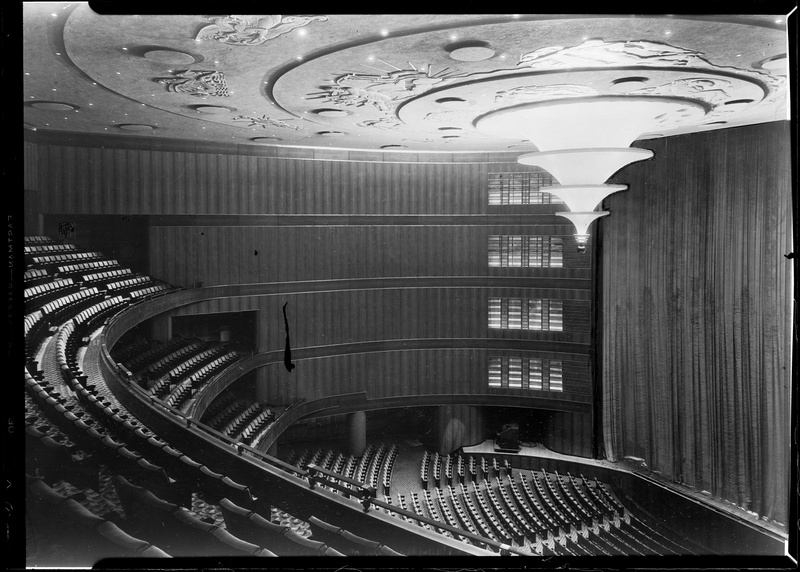
In order to keep both the Roxy and Radio City theaters afloat, there were frequent changes to their programs, with the theaters swapping films and live shows throughout the 1930s. In 1933, the Roxy’s name was changed to the RKO Center Theater after a legal battle with the existing Roxy theater on Seventh Avenue in Times Square. By November 1937, rumors began to swirl about the possible demolition of the failing theater.
In 1940, John D. Rockefeller drove the last rivet of Rockefeller Center’s construction into the building next to the Center Theater, the new home of U.S. Rubber. Book publishers Simon and Schuster moved into offices above the theater. As development continued in Rockefeller Center, the theater tried to make ends meet once again with motion pictures. Walt Disney’s Pinocchio had its world premiere at the Center Theater in February 1940. Walt Disney’s name was added to the theater’s marquee and the building was adorned with a giant sign of Pinocchio’s face. The animated feature would be the last film shown at the Center. For the next ten years, the theater found success with ice skating shows, made popular by Olympic skater and actress Sonja Henie.
With the arrival of the 1950s, television was booming and the NBC network needed more space. Despite the success of the ice show, it was ousted from the theater when NBC took over and converted the space into a television studio. It took a lot of work and a lot of money to make the expansive theater auditorium conducive to television production, and some major stars of the time such as Eddie Cantor, Dean Martin, and Jerry Lewis declined to perform in the large space. As a television facility, the Center Theater hosted comedians, radio, television, and movie stars including Ed Wynn, Tallulah Bankhead, and Groucho Marx.
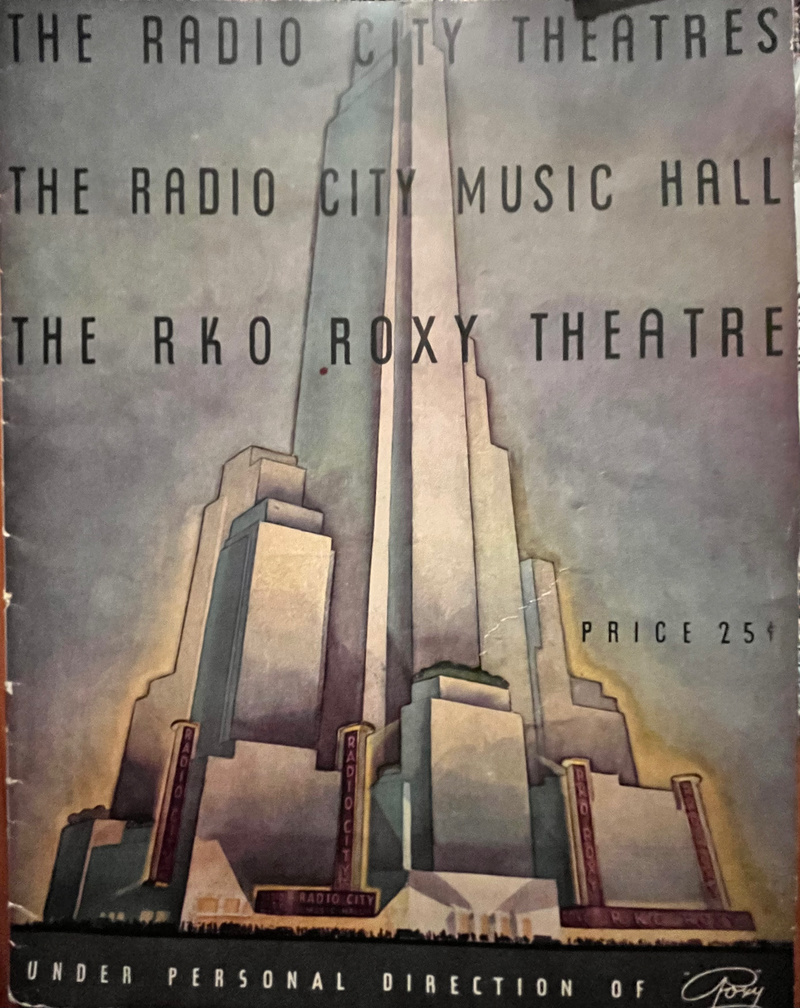
The last hurrah for the theater was hosting the New York broadcast of the 1954 Academy Awards. The award ceremony was also broadcast from Los Angeles. On the Center Theater stage, burgeoning Hollywood movie star Audrey Hepburn accepted her award for Best Actress in Roman Holiday.
When NBC’s lease was up in 1954, it was decided that the theater would be torn down. Radio City had its own demolition scare in the 1970s. By 1955, all traces of the Center Theater were gone and an annex to the U.S. Rubber Building designed by Harrison & Abramowitz stood in its place at the southeast corner of West 49th Street.
Uncover more forgotten pieces of Rockefeller Center history on our upcoming walking tour of the Art Deco complex!
Next, check out How a Dancer and Singer Helped Save Radio City from Demolition and 10 Secrets of Rockefeller Center






